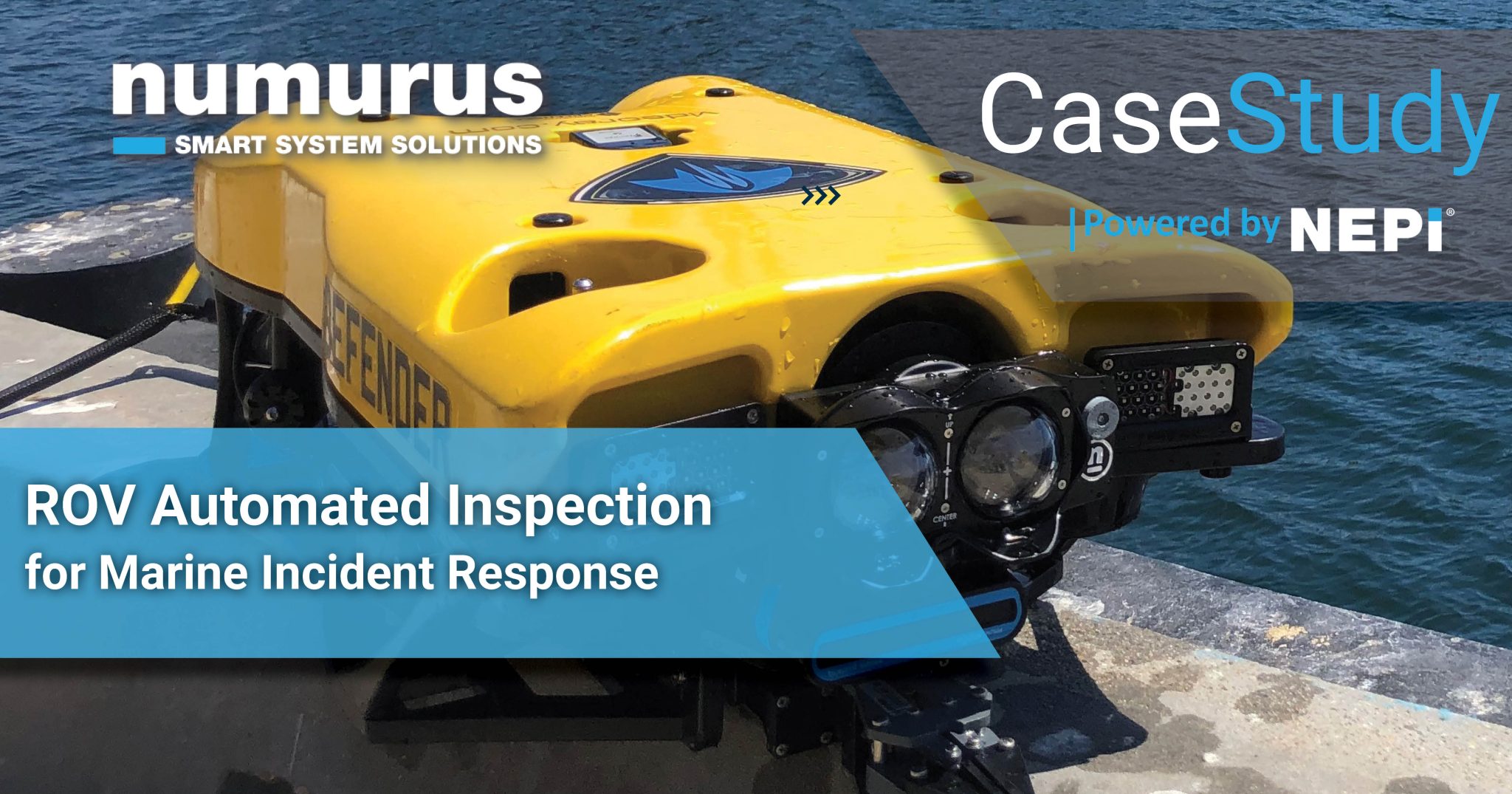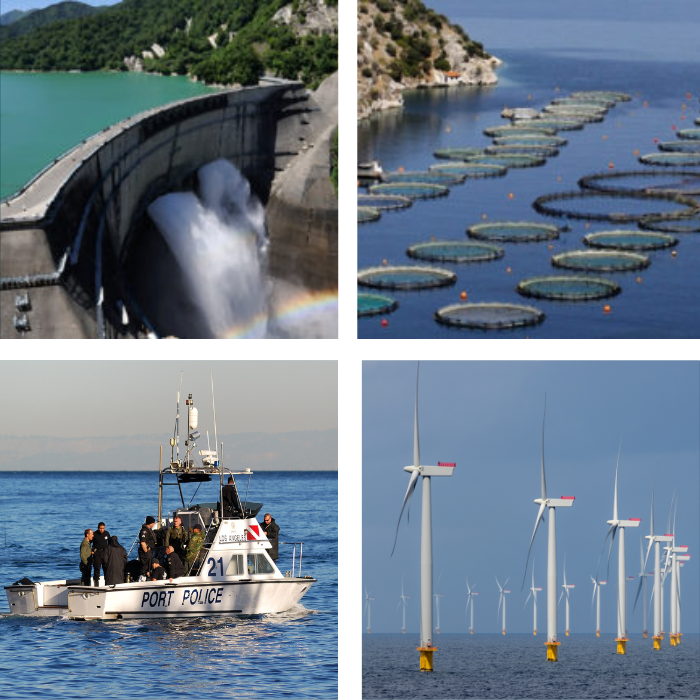
VideoRay Automated Inspection for Marine Incident Response
THE PROJECT
During the Advanced Naval Technologies Exercise (ANTX) Coastal Trident Exercise, Numurus, with technology partners VideoRay and SeeByte, supported a series of technical demonstrations and field experiments to exhibit new capabilities in automated data collection and real-time critical infrastructure data distribution following a major port incident event. The event was based on a cargo ship accident and lost cargo containers located on the port’s seafloor. The mission was to leverage and integrate AI and automation capabilities with a remotely operated vehicle (ROV), to rapidly find, identify and survey lost containers and distribute critical engineering data to stakeholders and remote engineering teams around the world in real-time.

 THE SITUATION
THE SITUATION
To act quickly after a major maritime accident, teams spread out around the world require key information to plan and execute response operations. Current underwater robotic inspection processes require pilots to spend a lot of time manually monitoring, logging, and transporting inspection data, all while navigating complex and hazardous environments. This produces massive amounts of low-value data that must be stored, transported, and reviewed after the fact. This situation results in an increased potential for missing critical data, long delays in getting data to those that need it, more expense and potential loss of lives.
 THE CHALLENGE
THE CHALLENGE
Automating underwater robotic inspection Automating underwater robotic inspection operations for less human-in-the-loop dependency requires interfacing many technologies like underwater cameras, sonar, lasers, inertial navigation systems, vehicle control systems, pilot interfaces, low-bandwidth communications, cloud connectivity and more, with artificial intelligence and automation software. While automated ROV solutions were the focus of much research and development work, commercial solutions that a typical ROV pilot could easily understand and manage are rare.
 THE SOLUTION
THE SOLUTION
VideoRay’s Mission Specialist Defender ROV upgraded with Numurus’ NEPI AI and automation software and SeeByte’s AI target detection models rapidly delivered a smart subsea inspection solution that automated critical data collection and real-time distribution to remote engineering teams. This solution enabled ROV pilots to focus on navigation, not data collection.
CHRIS GIBSON | CEO, VIDEORAY LLC “We saw firsthand during ANTX how the Numurus NEPI smart system software can significantly improve the autonomous capabilities of the Mission Specialist Defender. This man-portable solution intelligently collects critical inspection data and instantly distributes it worldwide, making it an invaluable tool for underwater inspection operations.”
 THE RESULTS
THE RESULTS
An ROV-based smart inspection system that automated critical data collection and real-time information distribution to stakeholders around the world. The smart inspection system successfully demonstrated the desired marine incident response automation by deploying mission-specific AI models provided by SeeByte and the following two NEPI automation scripts created for this exercise:
1) A NEPI automation script connected to onboard AI output that upon target detection collected high-resolution images and the geographic location of the target from ROV sensors, then automatically sent that data package to remote operations personnel around the world.
2) A NEPI automation script connected to a user interface “snapshot” control button that when pressed, collected 3D point cloud and geographic location data from ROV sensors, then automatically sent that data package to remote operations personnel.
THE FUTURE
 To further accelerate our customer’s robotic automation development efforts and extend NEPI-enabled inspection solutions to a wider range of applications, Numurus is continuously advancing its NEPI smart system software capabilities. Numurus is working with technology partners to create more out-of-the-box solutions. These efforts include:
To further accelerate our customer’s robotic automation development efforts and extend NEPI-enabled inspection solutions to a wider range of applications, Numurus is continuously advancing its NEPI smart system software capabilities. Numurus is working with technology partners to create more out-of-the-box solutions. These efforts include:
- Additional sensor drivers for sonar, laser, and NDT sensors
- Increase robotic control system driver functionality
- Add robotic manipulator control system drivers
- Expand pre-packaged AI models and automation scripts

